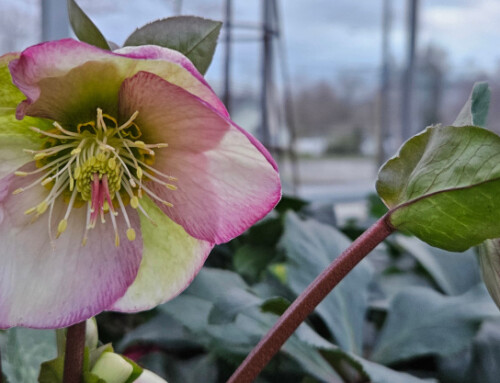Let’s face it–summer can seem like a scary time of year to plant. Between the fact that plants are fully leafed out and the need for extra watering, you may think it’s not worth the risk to plant during the summer. But that’s not a great option either; if you wait, you’re stuck looking at empty flower beds all summer and by the time fall rolls around, plant selection at nurseries is dwindling. So what to do?
In reality, summer is not a bad time to plant–in fact, done right, your plants will thrive and be well-established for the upcoming fall and winter. Here are a few tips to help you out.
First, plan to water. If you have an in-ground irrigation system, you may not have to make any changes to your “to do” list at all–let your sprinklers do the work! If you don’t have a sprinkler system, simply snake a soaker hose through your flower bed around your new plants and turn on the faucet every day or two for awhile until your plants are well watered. Obviously, the amount of water you have to give your plants will vary depending on the size of your plants, your soil type and the type of plants you use. Ask a nursery professional for recommendations on water when you’re shopping.
Second, treat your new plantings Bonide Root & Grow. This inexpensive, easy-to-use liquid can be a lifesaver for plants. Not only does it help reduce transplant shock, it stimulates root development to assist plants in rooting out quickly. I can’t stress enough how important this step is–I’ve literally seen plants come back from certain death from transplant shock with a couple of treatments of Root & Grow.
Third, don’t be afraid to give new plantings a light pruning. Some shrubs–like variegated willow and most varieties of barberry–can wilt easily after transplant. Not to worry–these plants simply have very tender leaves and with proper care will certainly recover. A light pruning to these plants to alleviate stress, coupled with the first two steps mentioned above, and voila, in just a couple weeks, they’ll look even better than when you bought them.
Finally, take care not to over-fertilize. You may think you’re helping your newly-planted treasures by feeding them right away, but it’s best to let them get established before fertilizing. Allow your shrubs, trees and perennials a month or so to begin building a strong foundation of roots before using water-soluble or slow-release fertilizer.
As you’re enjoying your garden this summer, don’t hesitate to fill holes in your beds with new plants. As we at Vander Giessen’s have installed landscapes over the last 50 years or so, we’ve never let summer slow us down with planting–in fact, that’s when we do most of our work!–so don’t let the great weather put a damper on your plans. Simply consider the above recommendations and enjoy the beauty that new plants can bring to your yard!








Leave A Comment